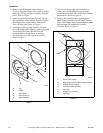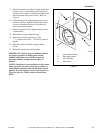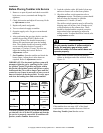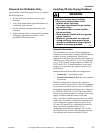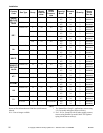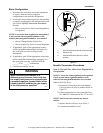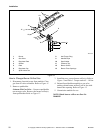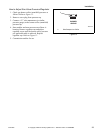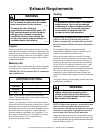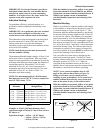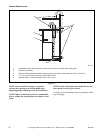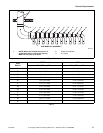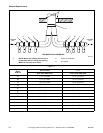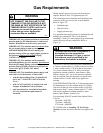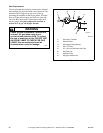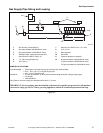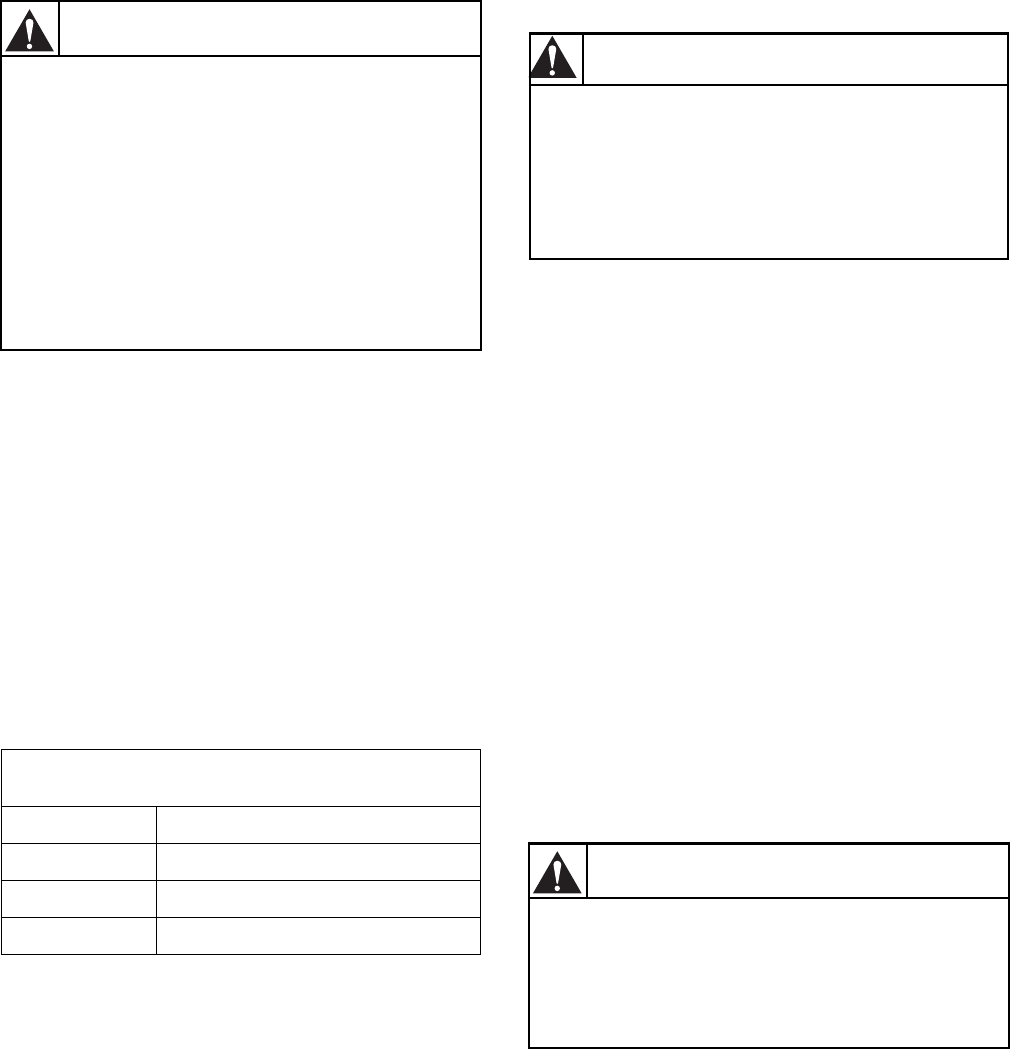
M414905
30
© Copyright, Alliance Laundry Systems LLC – DO NOT COPY or TRANSMIT
Exhaust Requirements
Layout
Whenever possible, install tumblers along an outside
wall where duct length can be kept to a minimum, and
make-up air can be easily accessed. Construction must
not block the airflow at the rear of the tumbler. Doing
so would prevent adequate air supply to the tumbler
combustion chamber.
Make-Up Air
A tumbler is forced air exhausted and requires provisions
for make-up air to replace air exhausted by tumbler.
IMPORTANT: Do not obstruct flow of combustion
and ventilation air.
Make-up air openings with louvers will restrict
airflow. The opening must be increased to compensate
for area taken up by louvers.
Make-up air openings in rooms containing tumbler(s)
and/or gas fired hot water heater or other gravity vented
appliances must be increased sufficiently to prevent
downdrafts in any of the vents when all tumblers are in
operation. Do not locate gravity vented appliances
between tumbler(s) and make-up air openings. If it is
necessary to duct make-up air to tumbler(s), increase
area of duct work by 25% to compensate for
restrictions in air movement.
Venting
IMPORTANT: Installing in-line filters or lint
collectors will cause increased static pressure.
Failure to maintain the secondary lint system will
decrease tumbler efficiency and may void machine
warranty.
For maximum efficiency and minimum lint
accumulation, tumbler air must be exhausted to the
outdoors by the shortest possible route.
Proper sized exhaust ducts are essential for proper
operation. All elbows should be sweep type. Exhaust
ducts must be assembled so the interior surfaces are
smooth, so the joints do not permit the accumulation
of lint. DO NOT use plastic or thin foil ducts – rigid
metal ducts are recommended. Use exhaust ducts
made of sheet metal or other noncombustible material.
DO NOT use sheet metal screws or fasteners on
exhaust pipe joints which extend into the duct and
catch lint. Use duct tape or pop-rivets on all seams and
joints.
Verify that old ducts are thoroughly cleaned out before
installing new tumbler(s).
NOTE: Exhaust ducts must be constructed of sheet
metal or other noncombustible material. Such
ducts must be equivalent in strength and corrosion
resistance to ducts made of galvanized sheet steel
not less than 0.0195 inches (0.495 mm) thick.
Where the exhaust duct pierces a combustible wall or
ceiling, the opening must be sized per local codes. The
space around the duct may be sealed with noncombustible
material. Refer to Figure 15.
Required Make-Up Air Opening
(to the outside) for Each Tumbler
Model Opening
50 Pound
144 in
2
(928 cm
2
)
75 Pound
195 in
2
(1258 cm
2
)
F75
250 in
2
(1613 cm
2
)
WARNING
A drying tumbler produces combustible
lint. To reduce the risk of fire, the tumbler
must be exhausted to the outdoors.
W057
To reduce the risk of fire and
accumulation of combustible gases, DO
NOT exhaust tumbler air into a window
well, gas vent, chimney or enclosed,
unventilated area such as an attic wall,
ceiling, crawl space under a building, or
concealed space of a building.
W059
WARNING
To reduce the risk of fire due to increased
static pressure, we do not recommend
installation of in-line secondary lint filters
or lint collectors. If secondary systems
are mandated, frequently clean the
system to assure safe operation.
W749
WARNING
Improperly sized or assembled ductwork
causes excess back pressure which
results in slow drying, lint collecting in
the duct, lint blowing back into the room,
and increased fire hazard.
W355



